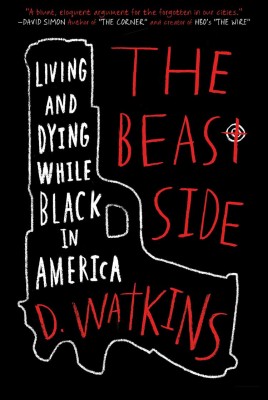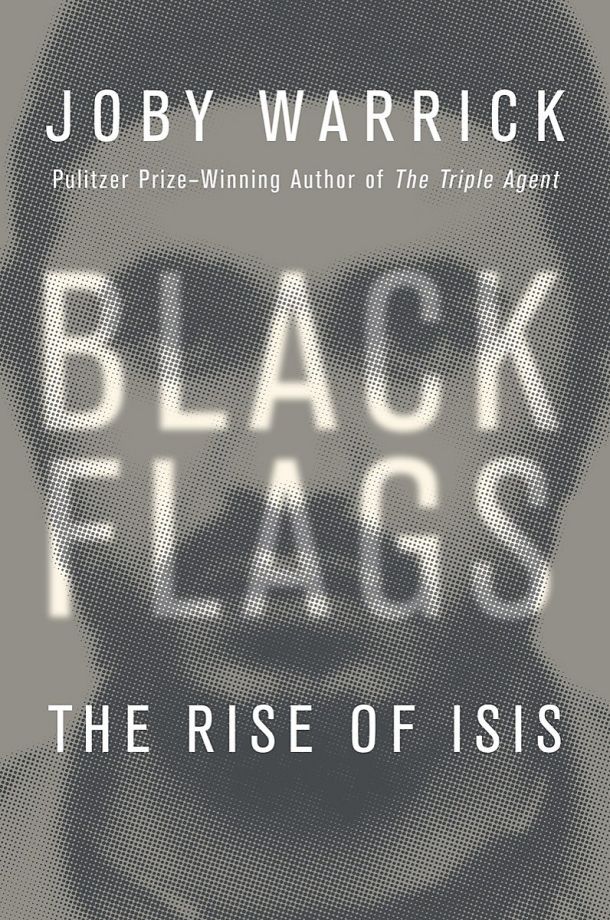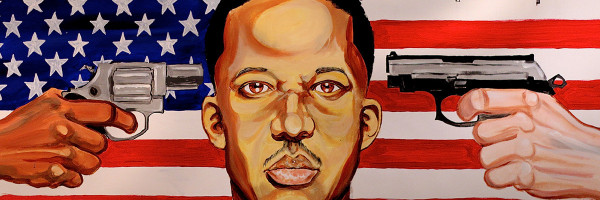LOS ANGELES TIMES: Ahmad Fadil was a high school dropout, a video store clerk and a petty gangster who got tattoos, drank alcohol and sold drugs as a youth in Zarqa, his hometown in northeast Jordan. His mother was so alarmed she sent him to a Muslim self-help class, and he soon found another calling. By the time a U.S. airstrike killed him in 2006, Abu Musab Zarqawi — Fadil’s nom de guerre — had led the Sunni insurgency in Iraq that killed tens of thousands of people and humbled a global superpower by miring it in a vicious civil war. Zarqawi — or the “sheikh of the slaughterers” as his admirers called him — also laid the foundation for the Sunni extremist army now known as Islamic State, or ISIS. Following his messianic beliefs and bloodlust, jihadis have beheaded captives, destroyed antiquities, reintroduced slavery and declared a strict Islamist caliphate in Iraq and Syria that has drawn adherents from around the globe. Joby Warrick’s “Black Flags: The Rise of Isis” is invaluable for anyone struggling to understand the gruesome excesses and inexplicable appeal of ISIS. It has cycled through several names and leaders, but the fanatic religious movement founded by Zarqawi has eclipsed Al Qaeda in influence, scale and ambition. It now threatens to remake the Middle East. MORE
NATIONAL GEOGRAPHIC: The so-called Islamic State grew out of Zarqawi’s original movement, Al Qaeda in Iraq. After Zarqawi’s death, it became Islamic State in Iraq, and its name reflects its ambition. It is an Islamic state, a caliphate, which doesn’t recognize secular rules or democracy. There’s a long tradition in both the Koran and the Hadith supporting the idea of a caliphate or Islamic state. The symbol of the black flag can also be traced back to the Hadith. There’s one particular passage that talks about these mighty men coming from the East with black flags and long hair and beards. So you have this colorful image of armed forces marching from the East to conquer the world. MORE
FRESH AIR: Joby Warrick, author of Black Flags, traces the Islamic State’s development from an al-Qaida-related insurgency in Iraq to a successful jihadist movement that now holds territory in Syria and Iraq. MORE
_____________
HOT BOOKS: To many in the age of Obama, America had succeeded in “going beyond race,” putting the divisions of the past behind us. And then seventeen-year-old Trayvon Martin was shot by a wannabe cop in Florida; and then eighteen-year-old Michael Brown was shot in Ferguson, Missouri; and then Baltimore blew up; and then gunfire shattered a prayer meeting at a church in Charleston, South Carolina. Suddenly the entire country awakened to a stark fact: African Americans—particularly young black men—are an endangered species. Now the country’s urban war zone is brought powerfully to life by a rising young literary talent, D. Watkins. The author fought his way up on the east side (the “beast side”) of Baltimore, Maryland—or “Bodymore, Murderland,” as his friends call it—surviving murderous business rivals in the drug trade and equally predatory lawmen. Throughout it all, he pursued his education, earning a master’s degree from Johns Hopkins University, while staying rooted in his community. When black residents of Baltimore finally decided they had had enough —after the brutal killing of twenty-five-year-old Freddie Gray while in police custody—Watkins was on the streets when the city erupted. He writes about his bleeding hometown with the razor-sharp insights of someone who bleeds along with it. Here are true dispatches from the other side of America. MORE
—after the brutal killing of twenty-five-year-old Freddie Gray while in police custody—Watkins was on the streets when the city erupted. He writes about his bleeding hometown with the razor-sharp insights of someone who bleeds along with it. Here are true dispatches from the other side of America. MORE
FRESH AIR: Growing up during the crack era in East Baltimore, author D. Watkins saw firsthand how the drug destroyed communities. “It trashed my neighborhood,” Watkins tells Fresh Air‘s Terry Gross. “I’m old enough to remember before crack really hit, and once it did hit, it changed a whole dynamic of how drug culture worked.” Suddenly, Watkins says, teenage kids — himself included — were selling crack on street corners. But the drug wasn’t leaving the neighborhood with each sale. “Everybody’s parents were junkies,” he says. “And all the kids were selling or using.” Then there was the gun violence, which often sprang from disputes over control of particular street corners. Watkins escaped getting shot more than once. His older brother was shot to death during the period he was selling crack. Other friends died or were sent to prison. Finally, Watkins says, “I was the last guy left. … I went from not really caring if I lived or died to caring — and I knew if I wanted to live, I had to stop.” Watkins gave up dealing drugs, returned to college and now has three degrees, including a master of education from Johns Hopkins University and a master of fine arts in creative writing from the University of Baltimore. His work has appeared in The Baltimore Sun and Salon, and he has taught in literacy programs in Baltimore. His new book is The Beast Side: Living (and Dying) While Black in America. The interview below has been lightly edited and condensed. MORE


